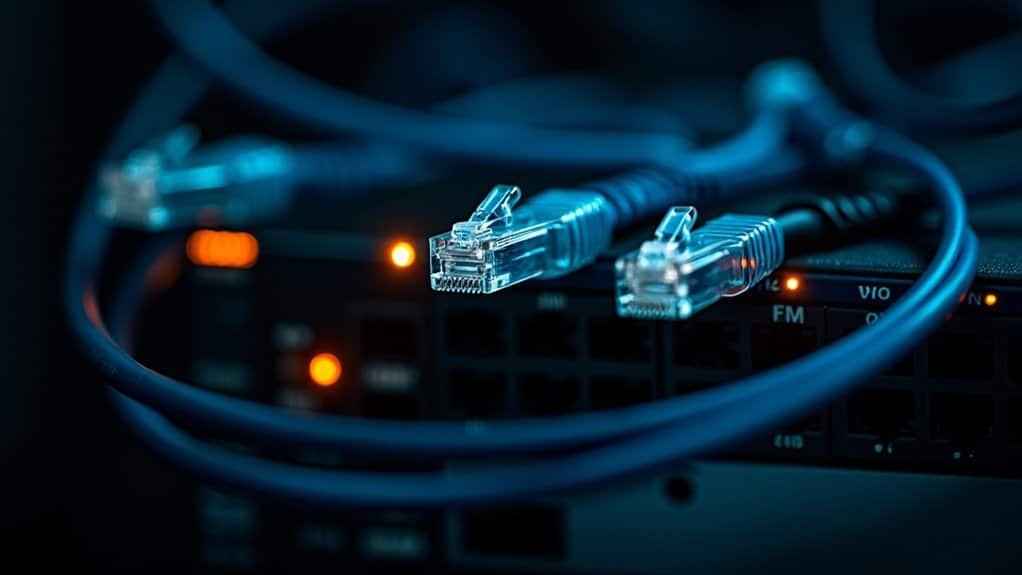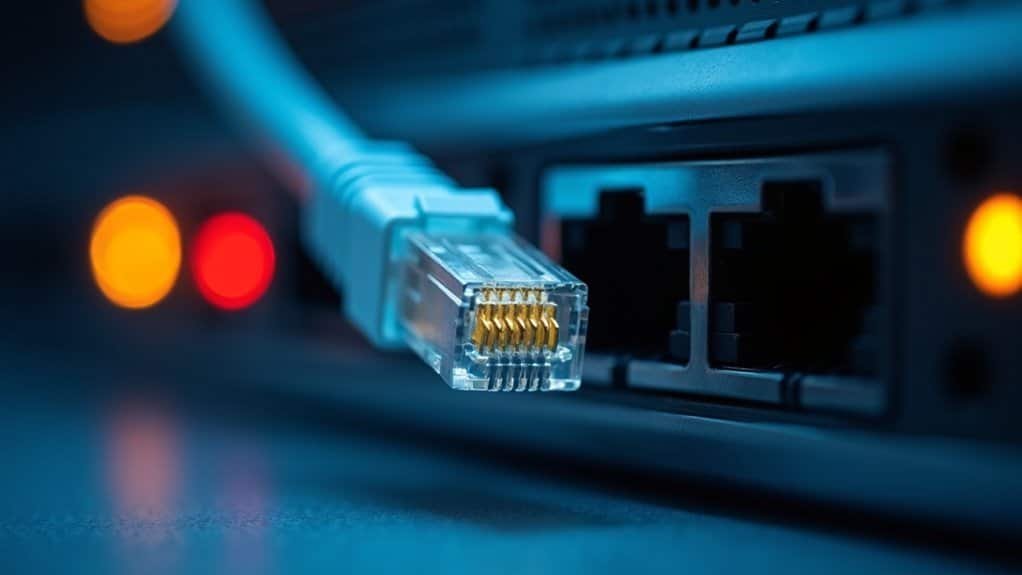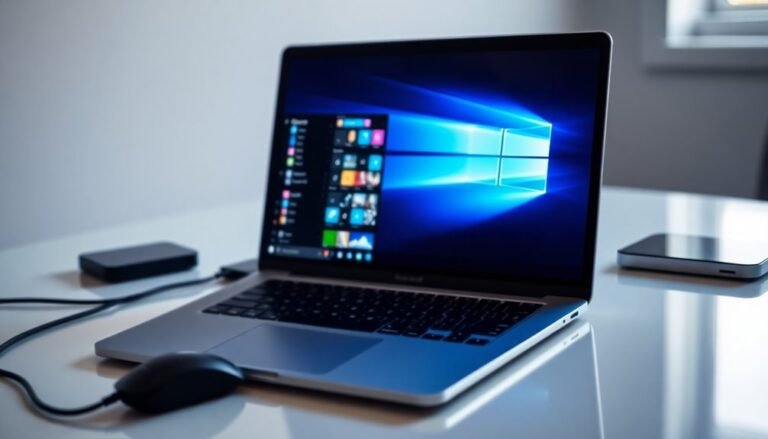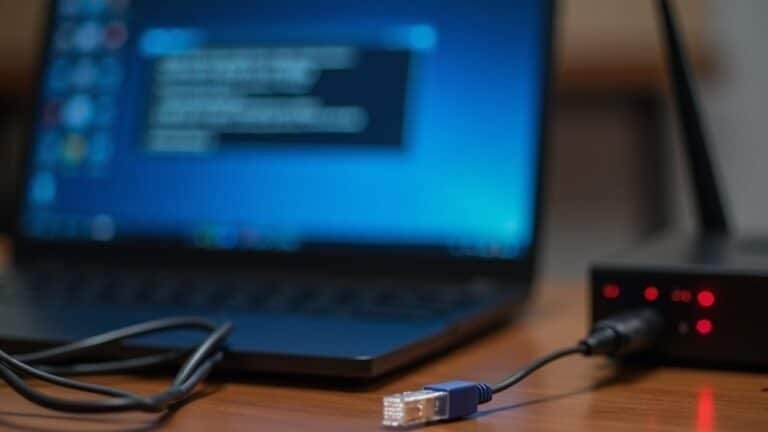Windows Error 67: Fix Network Path Error

When you see Windows Error 67, it means your system can’t resolve the network path. This is usually caused by incorrect UNC path syntax, outdated or misconfigured network drivers, disabled services, or firewall settings blocking connections.
Start by double-checking the UNC path and ensuring network discovery is enabled. Next, update your network drivers to the latest version.
Verify your firewall rules to make sure they are not blocking the connection. Also, inspect your DNS settings and confirm that the target share is online.
Following these steps will help you reconnect successfully. Further details ahead can help refine your troubleshooting process.
Understanding Windows Error 67 and Its Symptoms

Understanding Windows Error 67: Causes, Symptoms, and Fixes
Windows Error 67 is a common network error that displays the message: “System error 67 has occurred. The network name can’t be found.” This error typically occurs when you try to map a network drive, run a network scan, or execute the `net use` command in Command Prompt or PowerShell.
It prevents access to shared folders or drives using the Universal Naming Convention (UNC) path, even if the remote host is reachable by IP address or Fully Qualified Domain Name (FQDN).
Key symptoms of Windows Error 67 include failed logons with domain accounts, inability to resolve network names, and unsuccessful attempts to access network shares via FQDN.
Additional signs may involve missing DNS or NetBIOS cache entries and failures in system services like Distributed File System (DFS). One main cause of this error is incorrect command syntax when using the `net use` command, such as using forward slashes instead of backslashes.
Common causes include misconfigured or outdated network drivers, improper installation of NAT drivers, and syntax errors in UNC paths.
This error is most prevalent in domain or server environments but can also affect standalone PCs, leading to blocked access to remote network resources.
Understanding these symptoms and causes can help troubleshoot and resolve Windows Error 67 effectively, restoring smooth network connectivity and access.
Common Causes Behind Network Path Errors
Common Causes and Solutions for Network Path Errors Like Windows Error 67
Network path errors, such as Windows Error 67, can be frustrating but are often caused by a combination of misconfigured settings, disabled network services, or hardware and driver problems.
To effectively troubleshoot and resolve these issues, it’s important to methodically examine each potential cause. These errors typically arise from incorrect sharing settings, network profile mismatches, or blocked protocols necessary for SMB (Server Message Block) communication.
Additionally, firewalls or security software may unintentionally block the network connections needed for path resolution. In some cases, errors can occur if IPV4 is not activated on your network adapter, since certain network protocols require IPV4 to be enabled for proper communication.
For a streamlined troubleshooting process, focus on these common causes and fixes:
- Enable Network Discovery and File and Printer Sharing in your Windows network settings to allow proper device visibility.
- Set your network profile to Private instead of Public to ensure correct sharing permissions.
- Ensure critical Windows services like Workstation, Server, and TCP/IP NetBIOS Helper are running without interruption.
- Review firewall and security software configurations to unblock SMB protocols and relevant ports (such as TCP ports 139 and 445).
- Check your network adapter settings and hardware connections for any issues affecting connectivity.
By following these steps, you can quickly identify the root cause of network path errors like Windows Error 67 and restore seamless file sharing and network access.
For more detailed guides and troubleshooting tips, explore additional resources on network error resolution.
How Outdated Network Drivers Trigger Error 67
How Outdated Network Drivers Cause Windows Error 67 and How to Fix It
If your Windows PC uses outdated network drivers, you may encounter Windows Error 67 when trying to access network paths. This error often occurs because legacy network drivers lack compatibility with the latest Windows features and network protocols. Older drivers mightn’t support essential technologies such as SMB 3.0 or updated TCP/IP stacks, resulting in failures when resolving UNC paths and blocking access to shared folders and resources.
After upgrading your operating system, outdated network drivers may struggle to negotiate link speed, duplex settings, or handle modern authentication methods. This can cause intermittent network disconnects or device initialization errors.
Additionally, drivers that don’t support current security protocols can lead to access denials or incomplete secure channel establishment with domain controllers, further contributing to Error 67.
Outdated drivers can also disrupt network packet transmission, causing timeouts and dropped requests. To fix Windows Error 67, ensure your network interface card (NIC) drivers are fully compatible with your current Windows version.
Use Device Manager to check for driver updates or visit your hardware manufacturer’s website to download the latest drivers. Regularly updating your network drivers is essential for reliable, secure, and error-free network path access on Windows systems.
The Role of NAT and NetBIOS in Network Path Failures

Understanding the Role of NAT and NetBIOS in Windows Error 67 Network Path Failures
Windows Error 67 often occurs due to network path resolution issues involving NAT (Network Address Translation) and NetBIOS protocols. NAT modifies packet headers to translate internal IP addresses, but it frequently struggles with handling NetBIOS traffic embedded within SMB (Server Message Block) protocols. This leads to disrupted name resolution and failed session establishment, which are essential for accessing shared network resources on Windows systems.
NAT or PAT (Port Address Translation) devices that don’t support NetBIOS payload inspection or address translation can cause packets to be dropped or misrouted, resulting in inaccessible network shares. NetBIOS over TCP/IP depends on UDP ports 137–139, which are commonly blocked or improperly managed by NAT devices, further contributing to Windows Error 67.
How to Troubleshoot Windows Error 67 Related to NAT and NetBIOS
To resolve Windows Error 67, check for these common NAT and NetBIOS issues:
- NAT devices dropping or misrouting NetBIOS datagrams
- Expired or missing NAT translation table entries
- Blocked UDP ports 137, 138, and 139 required for NetBIOS communication
- Lack of NAT protocol agent support for translating embedded NetBIOS addresses
- Misconfigured NetBIOS or SMB settings on both client and server computers
Diagnosing Network Connectivity and Firewall Issues
Finally, check your firewall and security software settings to resolve network connectivity issues.
Temporarily disable any third-party firewalls, carefully review your Windows Defender Firewall rules, and ensure that network discovery and file sharing are enabled.
These steps are essential to allow proper access to network resources and improve overall network performance.
Troubleshooting DNS and Name Resolution Problems
Troubleshooting DNS and Name Resolution Issues to Fix Windows Error 67
Even when your network connectivity seems stable, DNS and name resolution problems can cause Windows Error 67. Incorrect DNS configuration or outdated DNS records often prevent your system from resolving network paths, leading to persistent connection errors.
To effectively troubleshoot and fix DNS-related issues, follow these essential steps:
1. Verify DNS Server IP Addresses
Ensure the DNS server IP addresses in your network settings are accurate and free of typos or incorrect entries. Proper DNS server configuration is crucial for successful name resolution.
2. Flush the DNS Cache
Clear your DNS resolver cache by running the command `ipconfig /flushdns` in Command Prompt. This helps remove stale or corrupt DNS entries that may disrupt domain name lookups.
3. Edit the Local Hosts File****
Check your local `hosts` file for any obsolete, incorrect, or conflicting hostname mappings. Removing or updating these entries can resolve name resolution conflicts.
4. Use DNS Diagnostic Tools****
Utilize tools like `nslookup` and `ping` to directly test DNS name resolution and verify responses from your configured DNS servers. These tools help identify where the resolution process fails.
5. Review Security Software Settings****
Inspect firewall and antivirus configurations to ensure they aren’t blocking or altering DNS traffic. Sometimes security programs interfere with DNS requests, causing name resolution errors.
By systematically following these troubleshooting steps, you can quickly identify and resolve DNS and name resolution problems that trigger Windows Error 67.
Maintaining correct DNS settings and regularly clearing the DNS cache helps ensure smooth network path resolution and prevents connection issues.
Effective Steps to Resolve Error 67 on Domain Controllers

How to Fix Windows Error 67 on Domain Controllers: Step-by-Step Guide
If you encounter Windows Error 67 on your domain controllers, follow these proven troubleshooting steps to quickly resolve the issue and restore network connectivity.
1. Update and Verify Network Adapter Drivers
Ensure you have the latest manufacturer-approved network adapter drivers compatible with your Windows Server version. Outdated or incompatible drivers often cause error 67.
If a recent update leads to instability, roll back or reinstall the driver using Device Manager. Confirm driver stability to prevent network path errors related to unsupported adapters.
2. Disable Misconfigured IP NAT Drivers
Check for misconfigured IP NAT drivers under Device Manager’s Non-Plug and Play Drivers section. Disable any problematic IP NAT drivers and restart your domain controller.
This step frequently resolves network path errors associated with error 67.
3. Restart the Distributed File System (DFS) Service
Restart the DFS service using services.msc or PowerShell commands. After restarting, verify successful service operation by reviewing event logs.
Confirm that the UNC path is accessible to ensure DFS functionality is restored.
4. Verify UNC Path Syntax and Permissions
Double-check the UNC path for correct syntax, including proper use of backslashes and valid share names.
Test mapping the network drive with the ‘net use’ command and the appropriate /user option for credentials. Review share permissions and group policies to eliminate authentication issues that cause error 67.
By systematically applying these targeted fixes, you can effectively troubleshoot and resolve Windows Error 67 on domain controllers, ensuring seamless network resource access and domain controller performance.
For more detailed guidance and updates, keep your system documentation and network policies up to date.
Preventative Maintenance and Best Practices
Effective Preventative Maintenance and Best Practices to Resolve Error 67 on Domain Controllers
To prevent Error 67 on your domain controllers and ensure seamless network accessibility, implementing proactive preventative maintenance is essential. Consistent maintenance reduces the chances of encountering network path errors and enhances overall system reliability.
Key preventative maintenance steps include:
1. Regularly Update Network Drivers
Keep your network drivers up to date using Device Manager or manufacturer-specific update tools. Always verify the driver versions after updates to ensure compatibility and optimal performance.
2. Audit and Monitor IP NAT Settings
Perform routine audits of your IP Network Address Translation (NAT) settings to ensure they comply with your network architecture. Disable any incorrect or unauthorized IP NAT drivers that could cause connectivity issues.
3. Review Group Policy Configurations
Regularly examine Group Policy settings, especially under the Network Provider section, to prevent misconfigurations that might block access to network shares or cause access denials.
4. Optimize Windows Features and Client Components
Enable only the Windows features and client components necessary for your network operations, particularly those required for Universal Naming Convention (UNC) access, to minimize potential conflicts or errors.
5. Standardize UNC Path Syntax and Educate Users
Maintain standardized network path syntax across your organization and provide user training on correct UNC conventions. Review login scripts to ensure consistent and error-free network share access.
By following these best practices for preventative maintenance, you can effectively minimize the occurrence of Error 67 and improve the stability and accessibility of your domain controller network paths.
Implement these proven strategies today to optimize your domain controller’s performance and maintain a reliable network environment.
Real-World Scenarios Where Error 67 Occurs
Common Real-World Causes of Windows Error 67 and How to Fix It
Windows Error 67 typically occurs when network path resolution or drive mapping fails due to configuration errors, permission problems, or protocol mismatches. This error often appears when mapping a network drive with an incorrect UNC path or referencing a non-existent shared folder.
You may encounter Error 67 if the target folder is offline, the path is mistyped, or your user credentials lack the necessary permissions.
In Windows domain environments, Error 67 can signal that the domain controller isn’t responding. This issue is frequently caused by outdated or misconfigured network drivers or NAT (Network Address Translation) components.
Additionally, failure in resolving Fully Qualified Domain Names (FQDN) during commands like “net use” can trigger Error 67. This happens when NetBIOS over TCP/IP fails to resolve hostnames, even if basic connectivity tests like ping succeed.
Timing and network mounting issues, such as delays or race conditions during the connection process, may also cause Windows Error 67 before the network share is fully accessible.
Furthermore, incompatible or missing network drivers and unsupported network protocols can interrupt path resolution, making network shares unreachable across different Windows versions.
To troubleshoot and resolve Windows Error 67, verify the UNC path syntax, ensure the shared folder is online, check user permissions, update network drivers, confirm domain controller accessibility, and validate network protocol settings.
Addressing these common causes will improve network drive mapping reliability and prevent Error 67 in Windows environments.
Command Line vs. GUI: Testing Network Share Connectivity
How to Check Network Share Accessibility and Fix Windows Error 67 Quickly
Struggling to determine if a network share is accessible or facing Windows Error 67? Understanding the benefits of both command line and GUI tools is key to effective troubleshooting.
Command line utilities offer detailed diagnostics, scriptable workflows, and clear error outputs, making them perfect for pinpointing connectivity or authentication problems behind Error 67.
Meanwhile, GUI tools provide fast verification and user-friendly interfaces but may hide crucial network details.
Top Methods to Test Network Share Connectivity and Resolve Windows Error 67:
- Use ping and tracert commands to check network reachability and identify network hops causing issues.
- Run net use servershare to test direct share mapping and uncover specific error codes like Error 67.
- Utilize File Explorer to test UNC path access instantly and verify share permissions.
- Open Network and Sharing Center to review network adapter status and settings.
- Employ pathping for advanced analysis of route quality, packet loss, and latency.
For the best results in troubleshooting Windows Error 67, start with command line tools to gather granular data, then use GUI tools for visual confirmation.
Combining both approaches ensures you quickly and accurately diagnose and fix network share access problems.
Follow these steps to improve your network share connectivity and eliminate Windows Error 67 errors effectively.
Frequently Asked Questions
Can Error 67 Occur on Non-Windows Operating Systems?
You can’t encounter error 67 on non-Windows operating systems because they use different network stacks and error codes. Instead, you’ll see native error messages when accessing Windows shares, often related to SMB client configuration or protocol mismatches.
Does Error 67 Impact Mapped Printer Shares?
Imagine losing access just when you need to print—yes, Error 67 directly blocks mapped printer shares. Check UNC path syntax, update network drivers, review Group Policy, and resolve network misconfigurations to restore printer share connectivity quickly.
Are There Third-Party Tools to Automatically Fix Error 67?
You won’t find reputable third-party tools that automatically fix error 67. Instead, manually update network drivers, adjust configurations, and verify syntax. Always back up settings and use Microsoft’s built-in utilities before considering any external network repair software.
How Does Error 67 Affect Virtual Machines and Containers?
Imagine your VMs and containers as ships at sea—error 67 acts like a sudden fog, blocking routes to shared ports. You’ll lose access to admin shares, disrupt backups, and encounter failed mount or connection attempts. Troubleshoot network configs.
Can Error 67 Be Triggered by Antivirus or Endpoint Security Software?
Yes, you can trigger Error 67 if antivirus or endpoint security software blocks required network connections, drivers, or protocols. Disable security components temporarily to test, review logs for false positives, and adjust firewall or policy settings as needed.
Conclusion
When tackling Windows Error 67, remember, “a chain is only as strong as its weakest link.” Check each network component—drivers, firewall, NetBIOS, and NAT—systematically. Use command line tools for swift diagnostics and verify settings on both clients and domain controllers. By staying proactive with updates and best practices, you’ll minimize future disruptions. Troubleshooting with precision guarantees your network paths remain accessible and efficient. Don’t let a single misconfiguration break your workflow.





